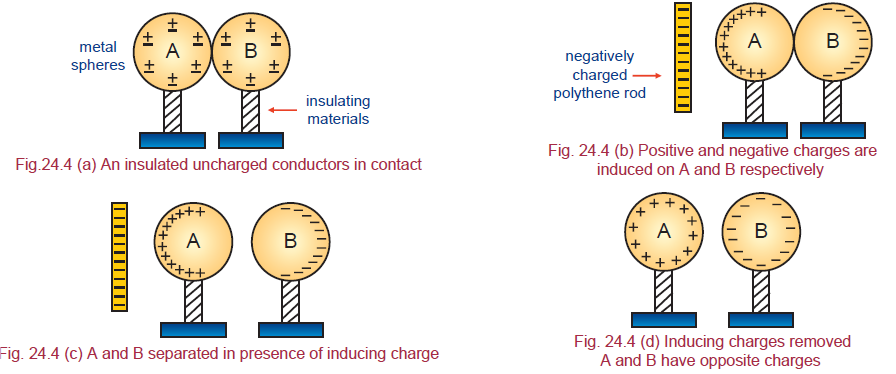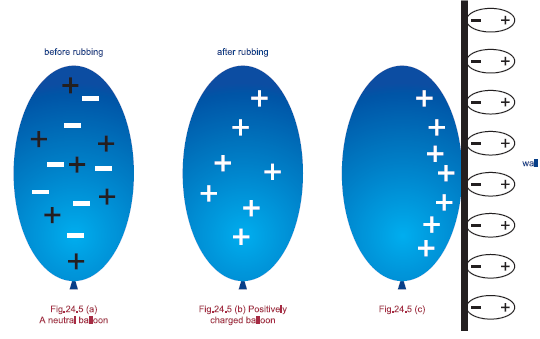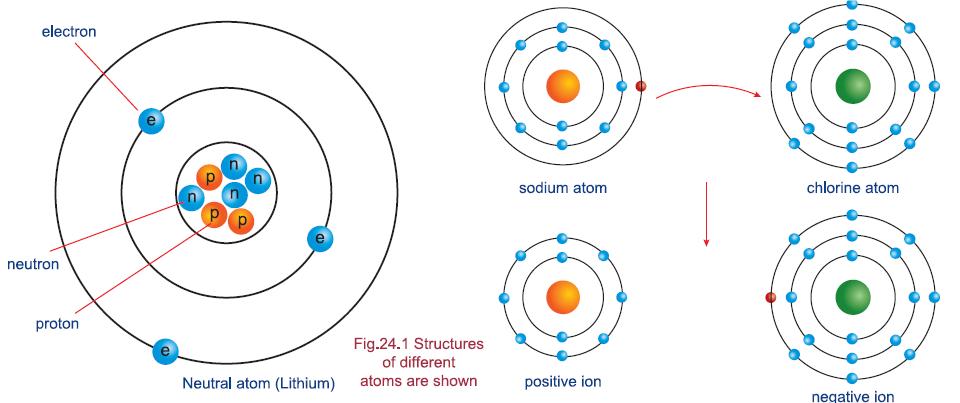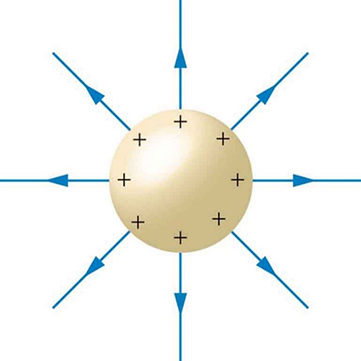
Electrostatic Induction
Electrostatic induction occurs due to the movement of free electrons of a conductor from one side to the other under the effect of an outside charge.

Attraction between Charged and Neutral Objects
When an inflated balloon which is shown in the following figure is rubbed on hair, electrons move from the balloon onto hair.

Forces between Electric Charges
There are two types of charges, positive charge and negative charge.
- Like charges repel.
- Unlike charges attract.
An atom has protons in the nucleus and electrons around the outside. A proton has a positive charge and an electron contains negative charge.

In a neutral atom:
Number of protons = number of electrons
When two objects rub together, some electrons leave one object (so it becomes +ve) And go on to the other object (so it becomes -ve). A conductor allows electrons to flow through it. An insulator does not allow electrons to flow through it.
Van de Graaff Generator
Van de Graaff generator is a machine used to charge objects easily.This can produce a high voltage. A Van de Graaff generator can cause sparks.
Static electricity can be Dangerous
- When fuelling planes. When oil passes through the hose while refuelling, it rubs inside the hose and attains electrostatic charge due to friction by rubbing.
- When water particles in the thunderclouds rub against each other, they become charged due to friction by rubbing and cause lightning.
Electric charge is measured in coulombs.
Electric Field
The region around an electric charge is called electric field.


